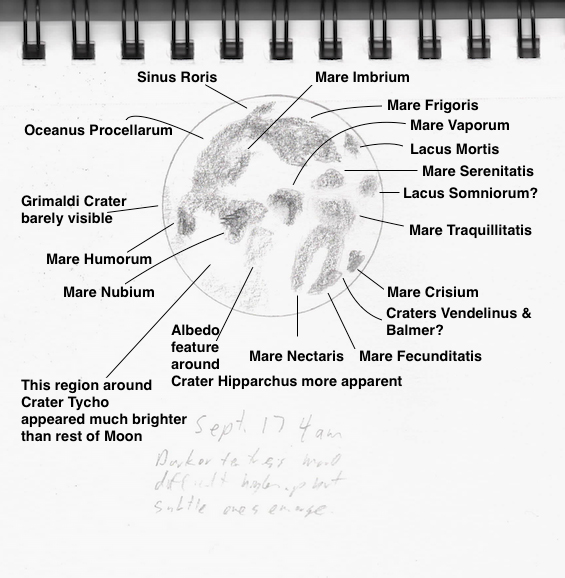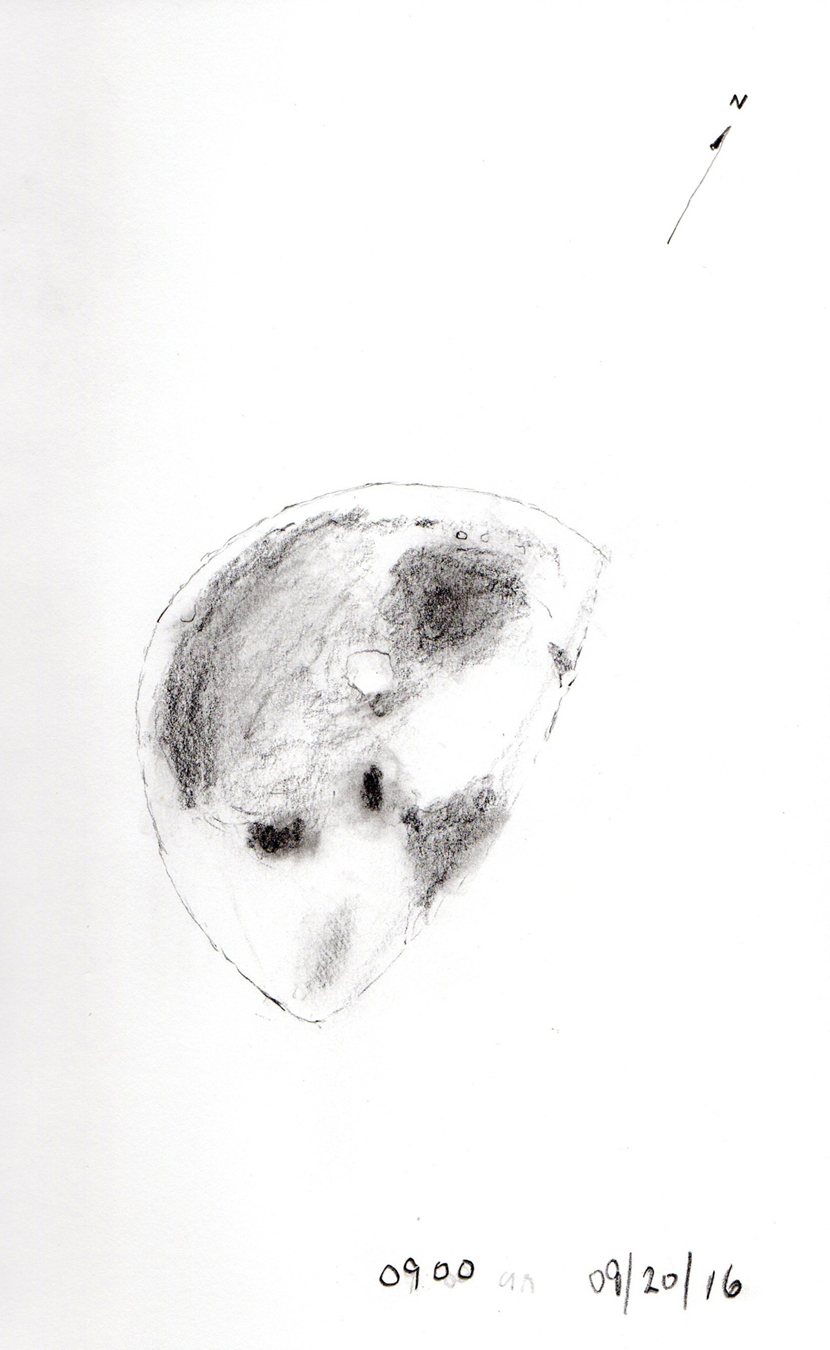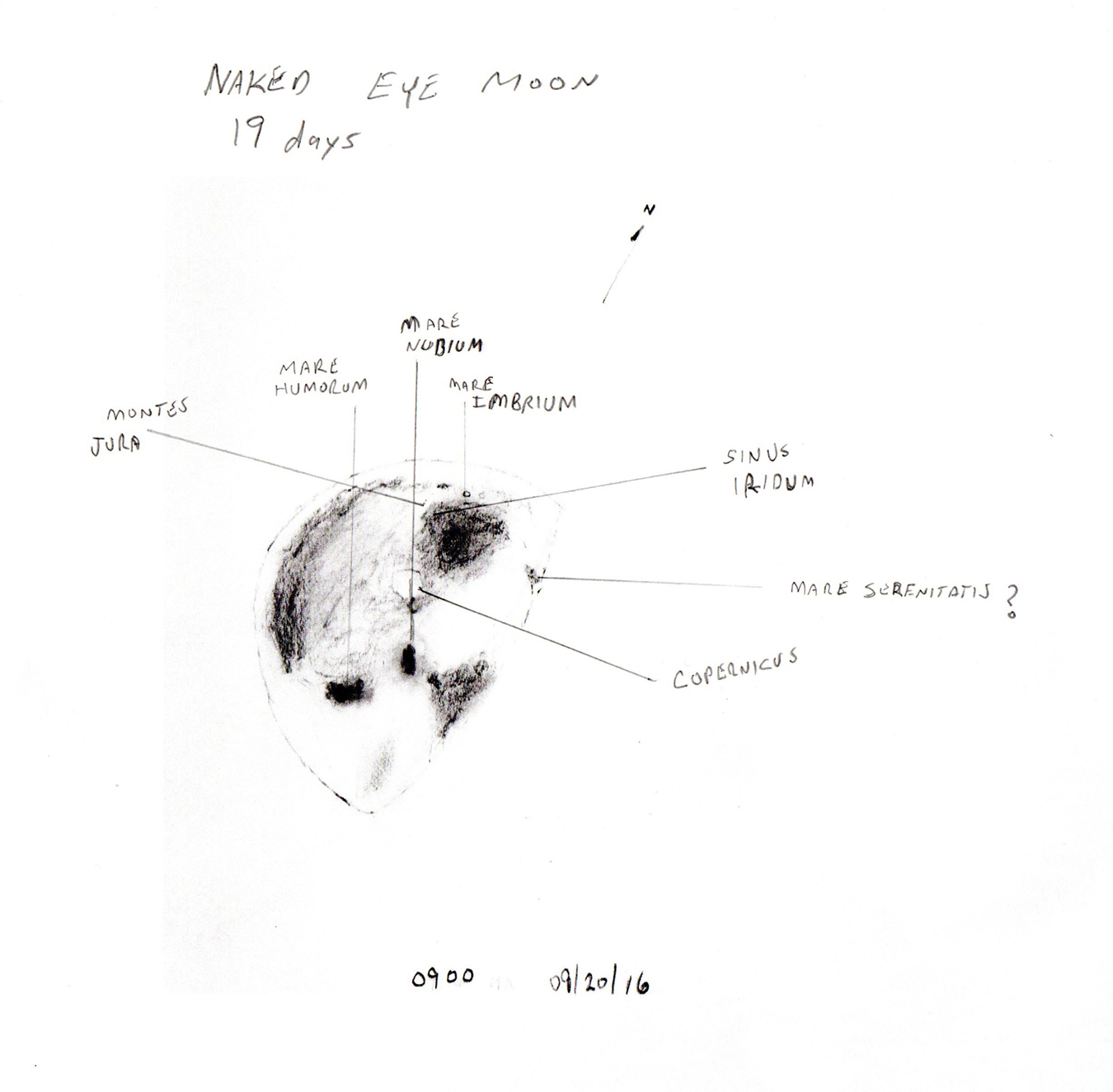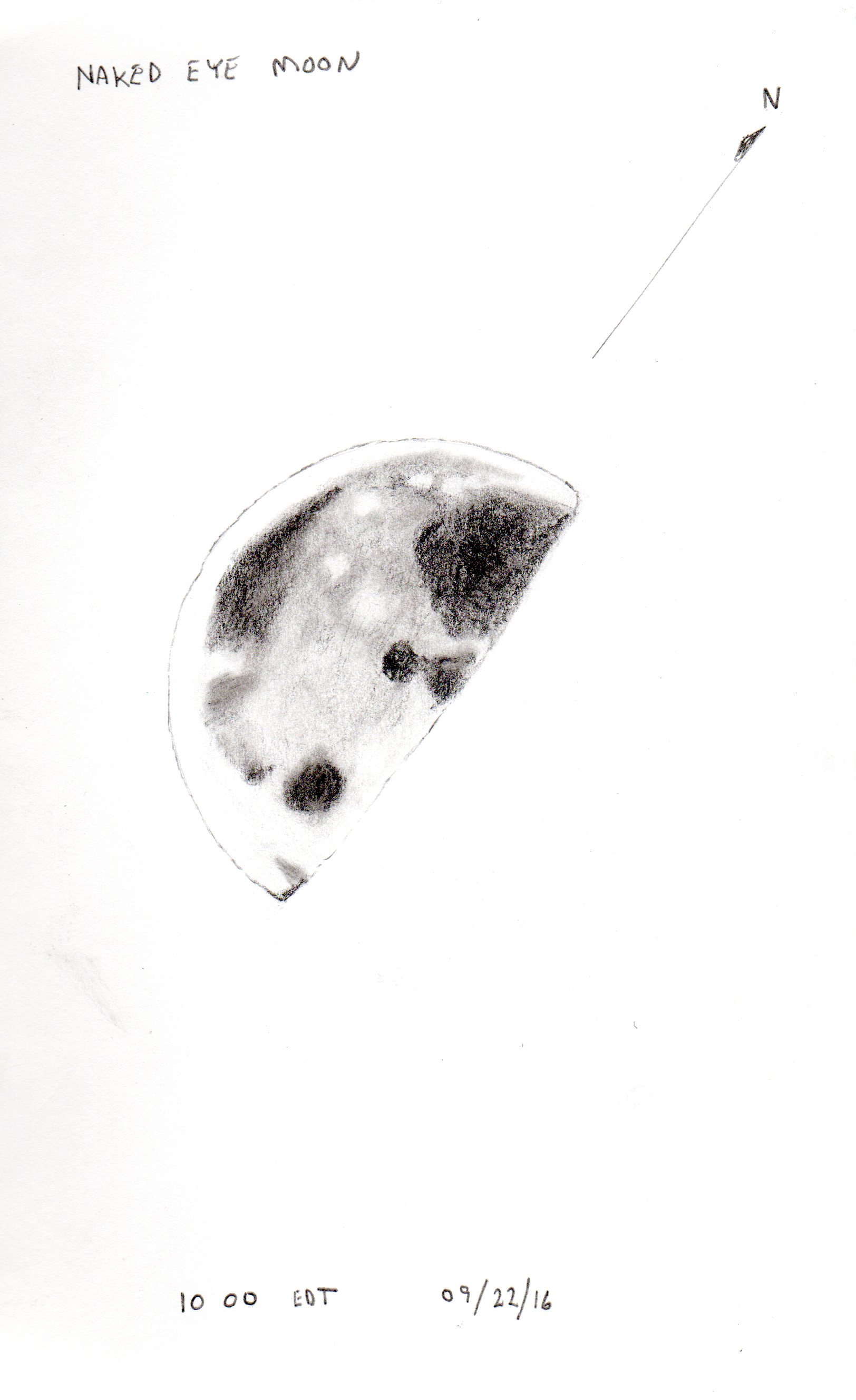| This gallery features the work of members of the RASC Astrosketchers' list. |
Unaided-Eye Observations of the Moon
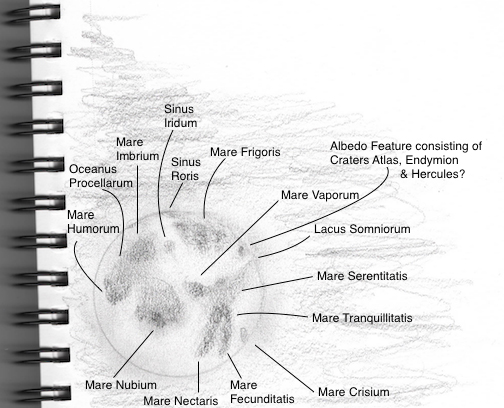
Chris Beckett ©
September Moon (2016 September 15) shining through cirrus clouds at 4 o'clock in the morning.
Unaided eye, using HB&4B large-lead sketching pencils.
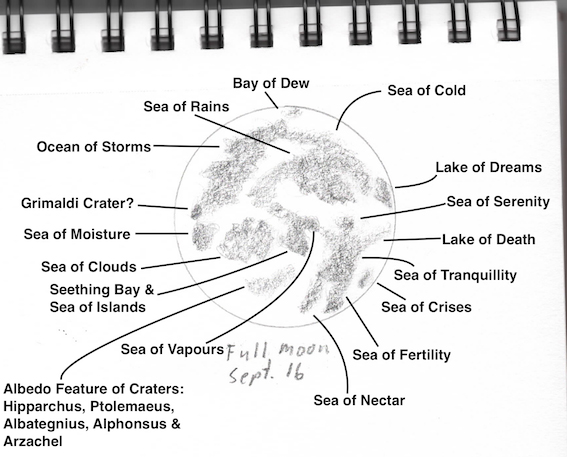
Chris Beckett © Full Moon 2016 September 16.
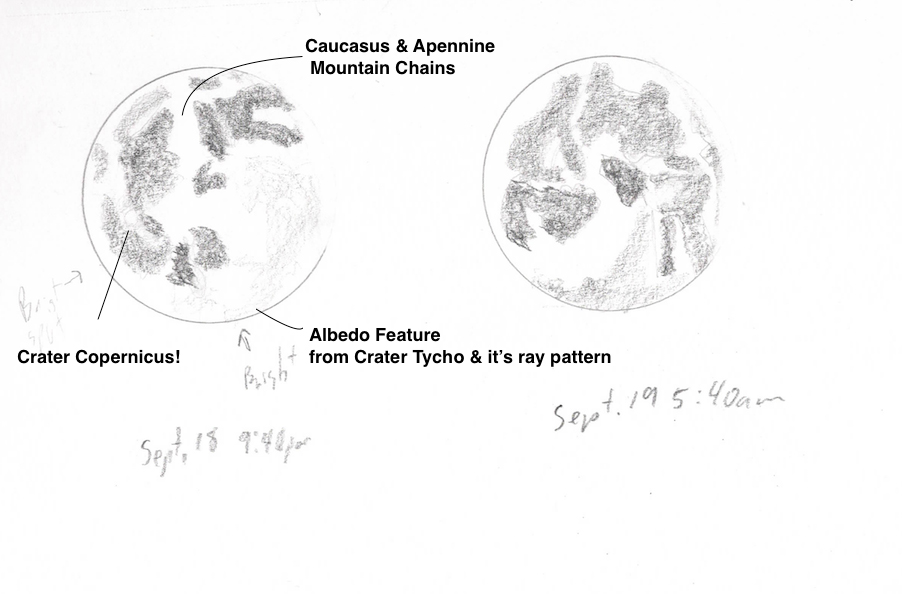
Chris Beckett ©
Moon 2016 September 18 & 19. Knowing the location of telescopically conspicuous topographic formations means once can discern where on the unaided-eye Moon craters such as Copernicus and Tycho are discernible among the albedo features.
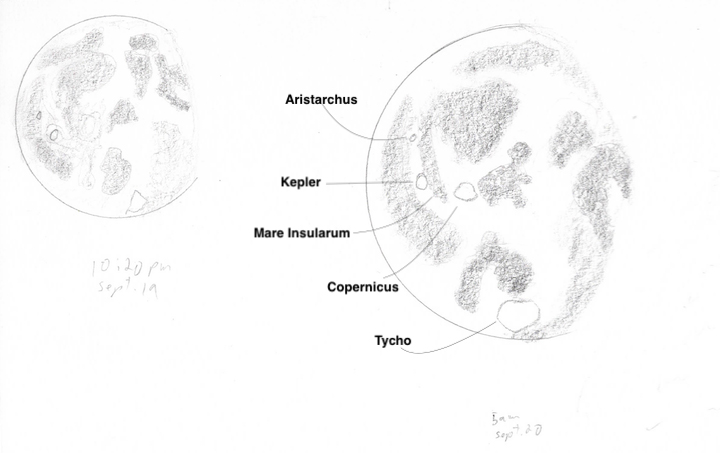
Chris Beckett ©
Moon 2016 September 19 & 20.
Work in progress to determine naked eye visibility of lunar craters.
More Moon Sketches
Clark Muir©
Moon 2016 September 19.
I made an attempt at sketching the Moon this morning. I have noticed over many years that the waning gibbous phase as seen in the morning seems to offer the best conditions for naked-eye lunar observations. Whether this is real or a perception on my part, I can not say for certain. In very rare moments (not today) I can detect "texture" on the terminator during this phase. By that I mean that bumps and ridges (mountain ranges) along the terminator can be seen giving an unmistakable sense that the moon is not a smooth surface. It might be that a specific phase and a favorable libration combine to assist the observation. It would have been wise of me to have written the time and dates over many years to assist in the investigation...
Clark Muir©
As for today's effort, a few features can be positively labelled. Some are surprisingly small. I will clean the sketch up and see what happens.
Clark Muir©
Moon 2016 September 22.
Three mornings in a row with a clear sky. This is today's attempt.
I am using a cheap pencil sketch set that includes softer leads with erasers, etc. The big addition is the use of blending tortillons. I quickly realized that by using a quality very white paper sketch book that it was difficult to show the bright white harsh features of the Moon. So, most of the surface should start as a subtle grey. Rubbing the surface very gently with a soft pencil and then using the tortillon to dilute the colour evenly on the surface gives the starting base. I cheat by erasing the small points where the craters appear to create a "whiter" spot (any error can be reblended). Larger bright white areas of the Moon do not get the grey base. Adding more pencil to the darker Mare can be done with greater confidence.
All of this has been learned in the last three days. The next question is to determine the best size to make the drawing. My first attempt was too large.
The scan has made the Mare areas appear darker than they were drawn.
You are right about the definition around Sinus Iridum. I think it would be more accurate to describe it as seeing the brightness of Montes Jura.
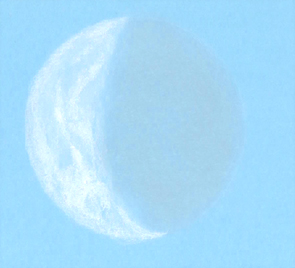
Chris Beckett©
Moon 2016 September 25.
Clark wrote detailing his observations of the dimly-lit earthshine compared to the sunlit side so we've been going back the past few mornings and it finally cleared for me today.
White chalk on blue "scrapbooking paper", not sure what it is exactly, but it was the tone I was looking for.
| This gallery is curated by R.A. Rosenfeld for the Astroketchers' list. |

